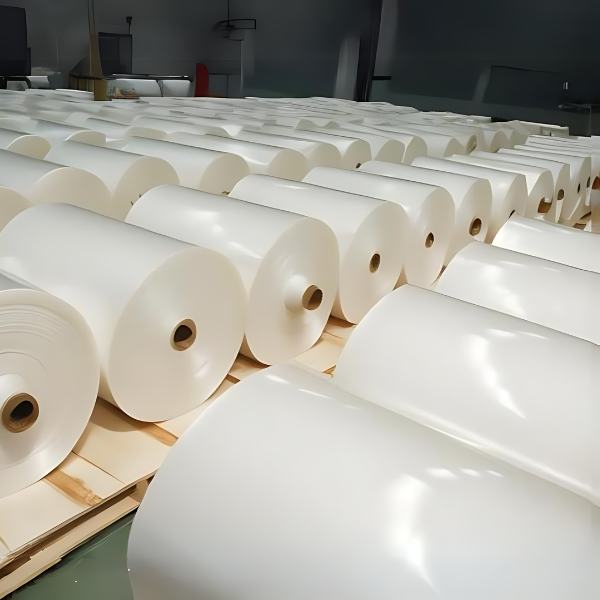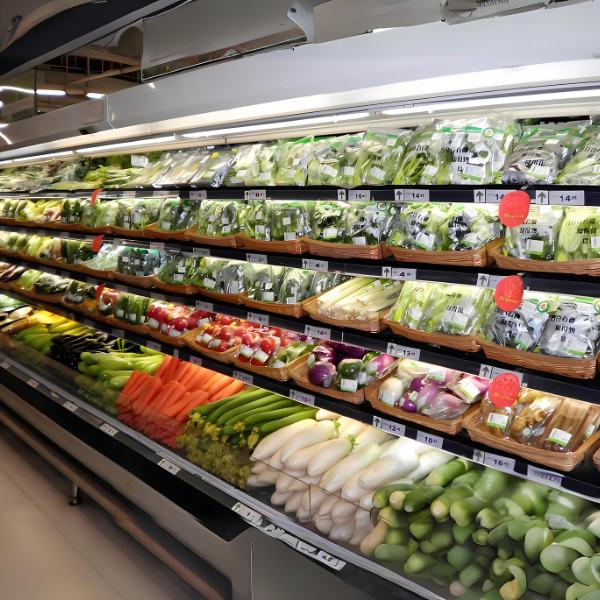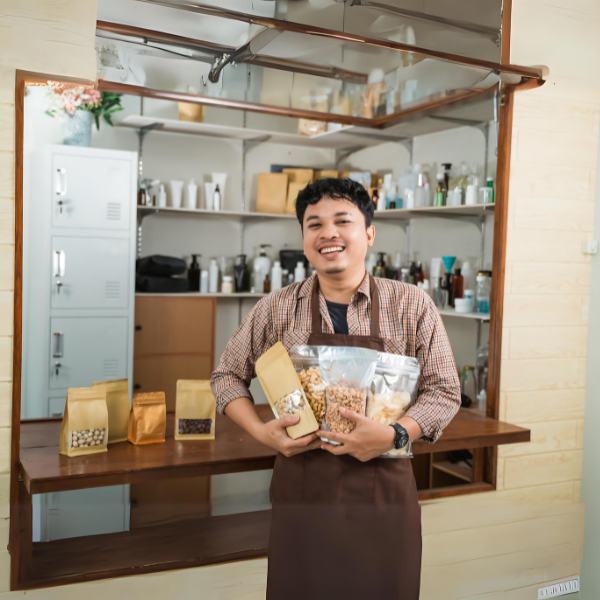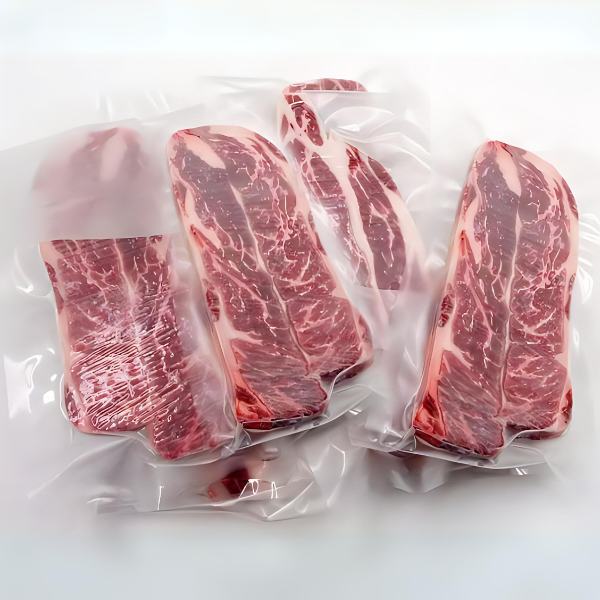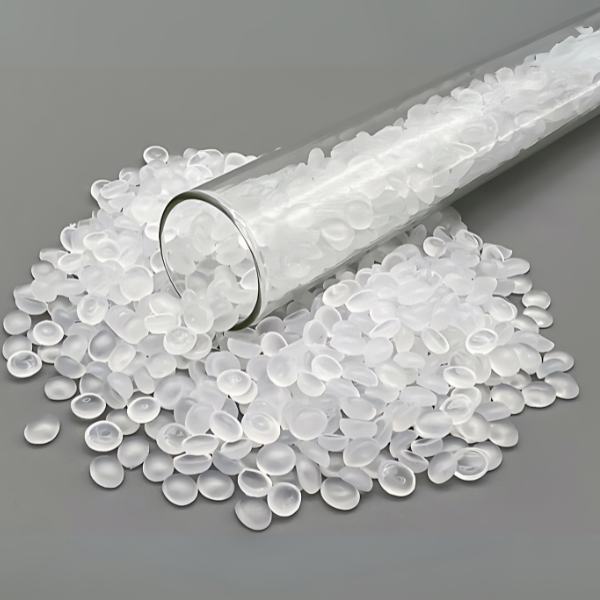Abstract
This document details the precautions in printing and using nylon film for retort packaging, including the properties of nylon film, the control points of storage and printing processes, and the analysis of delamination issues in high-temperature retort packaging using BOPA film.
BOPA film can be produced by tubular film stretching or biaxial stretching of flat film. The different production methods result in varying degrees of bow effect, which significantly affects the printing registration accuracy and the flatness of the packaging bags.
Precautions for Choosing Raw and Auxiliary Materials Before Printing Nylon Film
Quality faults can occur due to BOPA film’s susceptibility to moisture absorption and deformation, especially at humidity levels above 80%. It’s essential to control the workshop environment to prevent these issues when producing high-requirement retort packaging bags.
BOPA film is usually packaged with aluminum foil composite film. It is advisable to print immediately after opening and reseal the printed product with the original packaging film, especially paying attention to using and storing nylon film in high-temperature and high-humidity environments.
Before printing, BOPA nylon film can be preheated in an aging room at 35°C for 2 hours. It is crucial to monitor the drying temperature gradient during printing to avoid affecting the drying and registration accuracy of BOPA.
When selecting BOPA nylon for the printing layer, certain ink colors, such as peach red, rose red, and radiant blue, may permeate between bags under certain temperature and humidity conditions due to the movement of pigment particles dissolved in water. To reduce the risk of color penetration, it is recommended to choose ink types resistant to penetration.
For large-area use of spot and white inks, it is necessary to add ink hardeners when undergoing high-temperature sterilization above 121°C. The addition should be based on technical data provided by the ink manufacturer. The remaining ink should not be reused to print products intended for high-temperature retort.
Nylon film absorbs moisture easily. If the ink’s solvent uses isopropanol and drying is insufficient during the printing process, excessive -OH groups can remain in the ink layer, reacting with the curing agent in the adhesive, disrupting the balance between the main agent and the curing agent, leading to an uncured glue layer.
It’s crucial to control the addition of solvents containing -OH groups and standardize production process parameters, such as oven temperature, air volume, and machine speed. The oven temperature should be 10-15°C higher for large areas of ink that include a hardener than for other inks.
After printing, BOPA film should be tightly wrapped with an aluminum layer or aluminum-coated composite film to prevent moisture absorption, shrinkage, and performance changes. The printed film can be laminated immediately after printing, and printed semi-finished products that include an ink hardener should ideally be rewound.
Precautions for Printing Plate Rollers and Plate Making
The processing precision of the plate rollers significantly affects the overprint accuracy on BOPA film. The main precision indicators for mechanical processing of printing plate rollers include roundness, concentrically, cylindrical, and the taper of the conical hole.
Among these, the roundness of the plate roller is the most direct and crucial factor affecting overprint. Early gravure plate materials were seamless steel tubes, which were thick, uniform in thickness, and pressure-resistant.
However, many plate-making services now use iron sheet plates with thicknesses ranging from 1.2 to 4.5mm, leading to varied quality of plate roller materials and directly increasing the difficulty of gravure printing and affecting the print quality on BOPA film.
Due to the different tensile strengths of various plastic films, the stretch-back rates after printing also differ. For printing BOPA film, an ideal incremental diameter of the printing rollers is 0.04mm. With current machines operating at relatively high speeds, it’s essential not to reduce the overprint marks on high-speed gravure presses exceeding 120m/min, as this can easily lead to misalignment of BOPA film.
Control Points in the Printing Process
BOPA film deforms more quickly than other plastic films due to moisture absorption, causing significant changes in tension. Therefore, when printing BOPA, the tension should be set based on the width and thickness of the film, adjusting for each roll’s winding condition during the printing process.
If the tension is too low, the BOPA film can deviate laterally; if it is too high, it can stretch and deform severely, affecting overprint. Keeping tension variation minimal makes overprint precision easier to control.
After passing through a 60-80°C oven, BOPA film exhibits more significant tension and dimensional changes than other films, especially when printing more than six colors or graphics with high overprint difficulty.
Therefore, tension is also affected by oven temperature and machine speed, and tension adjustments must match oven temperature and speed.
Due to the unique properties of BOPA film, overprinting remains a challenge in the BOPA film printing process. The main issue is significant lateral overprint deviation, with the worst cases reaching up to 10mm. For overprinting, quality BOPA film can be accurately registered at 60m/min speeds, while lower-quality film may require speeds above 80m/min for effective overprinting.
Therefore, BOPA film overprint adjustments should be made at relatively high speeds. Additionally, the width of the BOPA film should not be too large, with a recommended maximum width of less than 1m for printing.
Analysis of Delamination Issues in High-Temperature Retort Packaging with BOPA Film
The main problems in producing high-temperature retort bags include bag breakage, delamination, leakage, weak heat seals, off-odors, and wrinkling. Nylon film used for boiling and retorting bags also faces issues of breakage and delamination.
Bag breakage generally refers to insufficient strength of the film or heat seal edges, such as poor boiling or low-temperature resistance of the heat-seal film, leading to “root cutting” and damage or leakage of the packaging bags. When selecting the inner layer film, choosing a boiling-grade co-polypropylene film (RCPP) is crucial due to its excellent boiling resistance, toughness after heating, and good low-temperature resistance.
Delamination usually appears as separating the BOPA and heat-sealing films without leakage. Bag breakage in retort bags is more straightforward; aside from heat-seal causes, a significant part is due to poor composite firmness leading to delamination, making the single-layer material unable to withstand the expansion force during boiling.
For bag breakage and delamination, it’s essential to carefully observe the location of breakage, analyze the interface of breakage and delamination, and the adhesion of the ink layer after delamination for troubleshooting.
There are various situations and causes for delamination in nylon film boiling bags
Most of the ink layer remains on the nylon film
This indicates the separation between the ink and adhesive layers or between the adhesive layer and inner layer film. In such cases, first, check whether the adhesive is fully cured and inspect the surface treatment effect, glue amount, etc., of the inner layer film. If a heat-seal film has been stored for a long time, it should be tested before use to prevent delamination issues if used without adequate testing, leading to the described delamination phenomena.
Most of the ink layer transfers to the inner layer of the film
This type of delamination can be interpreted as the separation between the BOPA film and the ink layer. The first considerations should be the quality of the BOPA film, ink characteristics, printing conditions, and compatibility between the glue and ink.
Poor corona treatment or moisture absorption by the nylon film can affect the ink’s adhesion strength. After printing, the ink layer’s adhesion strength can be tested using a non-drying glue test. Some polyurethane inks contain active functional groups that react with the curing agent and have better affinity with adhesives.
If the amount of glue applied is excessive or the ink layer has a high residual solvent content, the probability of the ink layer separating and transferring to the inner layer increases. To address this issue, using inks with lower viscosity during printing is recommended to minimize residual solvents and increase the amount of hardener during lamination.
Considerations from various aspects include
Causes related to nylon film
Due to the polar amide groups in nylon’s molecular structure, a slight corona treatment can increase its surface tension to 52 dynes/cm. However, nylon’s strong moisture absorption capacity, significantly influenced by ambient temperature and humidity, can quickly reduce the film’s surface tension. Therefore, each roll of film should be checked for corona treatment quality and effect before printing. For high-temperature retort bag production, such as BOPET//BOPA//RCPP composite bags, it’s essential to use BOPA films treated on both sides with corona, with surface tension not less than 50 dynes/cm to ensure high composite strength on both sides.
- Long storage times can lead to nylon films not meeting treatment requirements, or the corona-treated side may be misused. This problem often goes unnoticed until after printing, lamination, and maturation, when adhesion strength is found to be low, particularly after boiling, which leads to delamination.
- Rapid moisture absorption by nylon film, excessive additives, or significant differences in wet heat shrinkage rates can lead to shrinkage, wrinkling, and, ultimately, delamination. Therefore, during high-temperature and high-humidity seasons, special attention should be paid to workshop humidity levels above 70% to prevent moisture droplets from adhering to the nylon film. Additives and wet heat shrinkage rates and their differences should be monitored and controlled.
Other causes
- Certain additives in composite films (e.g., opening agents, antistatic agents, slip agents) can migrate to the surface more quickly at high temperatures, potentially reducing adhesion strength and affecting the composite film’s integrity. If the proportion of various additives in the heat-seal film is large, or if the film is too thick, a large amount of exudate at the bonding interface can form a weak interface, reducing the bond strength. Therefore, control over plastic additives in the heat-seal film is crucial. Different film materials and composite structures’ heat-seal parameters vary. Initial testing with a heat-seal tester to simulate the production line edge-sealing process and experimenting with various heat-seal temperature, time, and pressure parameters can help determine appropriate processing conditions.
- Excessive moisture in solvents, such as ethyl acetate, beyond national standards, can cause quality issues. Generally, adhesives used for high-temperature retort processing require solvent moisture content below 200 ppm. Alcohols and amines typically present in solvents and inks can also cause adhesive degradation and delamination if excessive.
- Defects in the adhesive itself or its formulation (e.g., mismatch between glue, ink, and film or low solid content in the adhesive) can also lead to poor lamination outcomes.
Testing requirements
Heat resistance and resistance to high-temperature media
The GB/T 10004-2008 standard for plastic composite films and bags for dry and extrusion lamination has more explicit requirements for retort bags’ heat resistance and resistance to high-temperature media than the GB/T 10004-1998 standard. The test for resistance to high-temperature media follows the 1998 version’s provisions, whereas heat resistance is a highlight of the 2008 standard. It requires testing the peel strength and heat-seal strength of the composite film after sterilization at the highest intended use temperature, ensuring no risk of bag breakage after cooking.
Requirements for selecting representative and specific samples
- Continuous sampling should cover the entire length of the sealing knife to avoid missing areas of poor sealing effectively.
- After the packaging machine operates normally, inspectors should take samples after machine adjustments, randomly selecting several sample bags from each row for boiling tests.
- After adjusting the heat-sealing temperature, pressure, machine speed, or changing film rolls, reconfirmation is necessary. Sampling for boiling performance tests should be repeated at each shift change, with immediate isolation and handling of any non-conforming products discovered during the process.
- If significant changes occur in normal production conditions, such as machine speed or temperature adjustments, or before and after roll changes, resampling or expanded sampling for boiling tests is required.
Basic Requirements for Selecting BOPA Films for Boiling and Retort Bags
- The film roll surface should be smooth without dirt, impurities, or uneven marks, and the thickness uniformity requirements are high. Films with less bow effect from synchronous stretching and smaller thickness tolerances are preferred. The specific method to measure the nylon film’s bow effect is determining the diagonal thermal shrinkage rate. The smaller the difference in diagonal thermal shrinkage rates, the better the product’s balance; less than 1.5% generally does not cause corners to lift or curl during bag making.
- To ensure ink adhesion strength, the film’s surface tension should be ≥52 mN/m. However, higher corona treatment values are not necessarily better.Double-sided corona-treated nylon film is required for sandwich products, with the untreated side’s surface tension reaching 50 mN/m to meet quality requirements. For large-area printing or the use of spot, white inks, or inks resistant to 110°C, the addition of ink hardener should be determined based on technical data provided by the ink manufacturer. Additionally, the drying temperature for large-area inks should be 8-10°C higher than other color groups to prevent solvent residue.
- Select films with good relative humidity adaptability and slower moisture absorption to ensure overprint precision. Ensure the nylon film’s moisture content is less than 3% upon leaving the factory.The elongation at break and tensile strength for products made using synchronous processes are smaller than those made with stepwise processes; whether they meet the requirements of the packaging bag should be tested and confirmed before production.
- Before use, allow the nylon film to acclimate indoors to facilitate overprint precision. Some nylon films’ additives canmigrate in significant amounts at specific temperatures, posing a considerable risk to product quality. Therefore, the film’s friction coefficient and haze should be further inspected, and ink types resistant to penetration should be chosen for use.
- Select film varieties with smaller wet heat shrinkage rates. Although the GB/T20128-2006 standard does not specify wet heat shrinkage rates, this is essential for boiling and retorting bags. For example, Japanese Unigis nylon films suitable for boiling and retorting have a wet heat shrinkage rate of <2.8% longitudinally and <1.7% laterally. Testing several film varieties under boiling and retorting conditions before production is also possible.
- If the shrinkage rates are similar, they can be used normally; if there is a significant difference, it’s best not to use them. Besides strict requirements for mutual shrinkage rates between materials, the difference between the nylon film’s longitudinal and lateral shrinkage rates should be as slight as possible, ideally controlled within 0.5%. Oxygen barrier properties are crucial for boiling and retort bags. Therefore, checking the oxygen barrier properties under normal environmental conditions and high temperature and high humidity conditions is necessary. Generally, after packaging the contents, BOPA film’s oxygen barrier properties can be checked in an 80% humidity environment.






